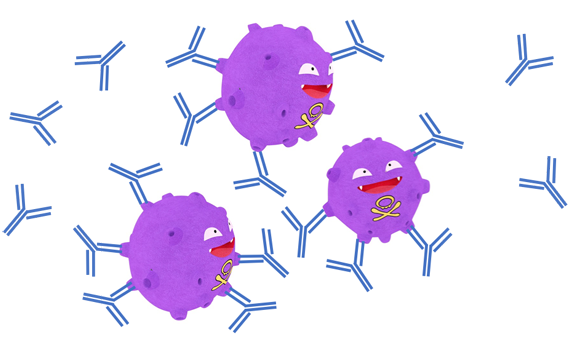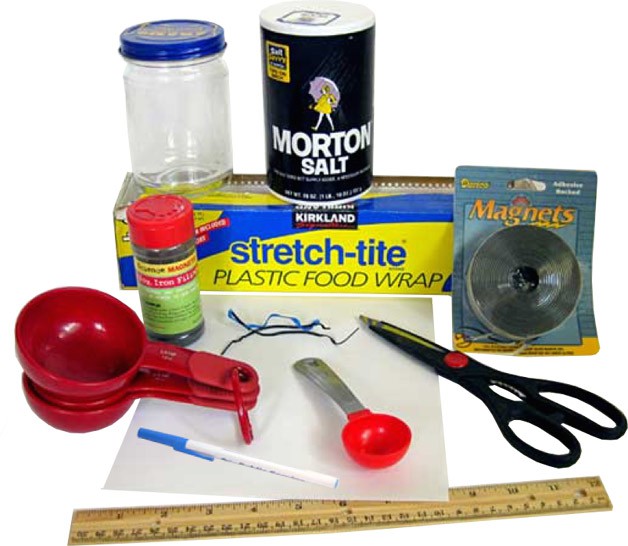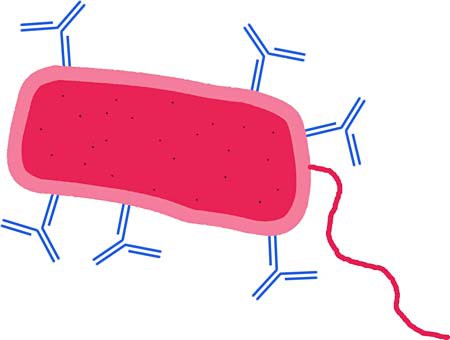Fighting Infections with Your Immune System
Summary

Overview
What happens when you get food poisoning or the flu? How does our body fight an infection when we get sick? In this lesson, students will build a model of our immune system to find out how our body responds to invading bacteria or viruses that cause diseases and to investigate the role of memory cells.Learning Objectives
- Understand how several groups of cells in our immune system work together to fight pathogens.
- Develop a model that demonstrates the function of antibodies and memory cells during a primary and secondary immune response.
- Explain how memory cells accelerate an immune response using experimental evidence.
NGSS Alignment
This lesson helps students prepare for these Next Generation Science Standards Performance Expectations:- MS-LS1-3. Use argument supported by evidence for how the body is a system of interacting subsystems composed of groups of cells.
|
Science & Engineering Practices
Developing and Using Models.
Develop and use a model to describe phenomena.
Engaging in Argument from Evidence. Use an oral and written argument supported by evidence to support or refute an explanation or a model for a phenomenon. |
Disciplinary Core Ideas
LS1.A: Structure and Function.
In multicellular organisms, the body is a system of multiple interacting subsystems. These subsystems are groups of cells that work together to form tissues and organs that are specialized for particular body functions.
|
Crosscutting Concepts
Systems and System Models.
Systems may interact with other systems; they may have sub-systems and be a part of larger complex systems.
Models are limited in that they only represent certain aspects of the system under study. Cause and Effect: Mechanism and Prediction. Cause and effect relationships may be used to predict phenomena in natural or designed systems. |
Materials
 Image Credit: Svenja Lohner, Science Buddies / Science Buddies
Image Credit: Svenja Lohner, Science Buddies / Science BuddiesMaterials required for for antibodies immune system activity include: magnetic tape, a ruler, scissors, plastic wrap, twist ties, a digital scale, a glass jar with a lid, table salt, iron filings, a measuring cup, a tablespoon, and a piece of paper and pen.
Materials for teacher preparation:
- Magnetic tape, about 1-inch width (3 inches per group); available from craft stores or online at Amazon.
- Ruler
- Scissors
Materials per group of 2–4 students:
- Plastic wrap (about 1 foot)
- Digital scale with 0.1 g increments; available at Amazon. Scales can be shared between groups.
- Twist ties (3)
- Glass jar with lid, 16 oz
- Table salt (1 cup)
- Measuring cup
- Measuring tablespoon
- Iron filings (1 tbsp.); available from educational material suppliers or online at Amazon.
- Piece of paper
- Pencil or pen
Background Information for Teachers
This section contains a quick review for teachers of the science and concepts covered in this lesson.Our immune system is made up of different cells and organs in our body that normally defend us against harmful microorganisms (microscopic organisms). We are all constantly exposed to microorganisms, some of which can make us sick. Any microorganism that makes us sick is called a pathogen ( "germs" in everyday language). Pathogens include harmful bacteria (like Salmonella or E. coli that cause food poisoning), microscopic fungi, viruses (ranging from measles to the flu), and more. When pathogens make us sick, we call it an infection.
Our immune system goes through a process called the immune response to fight off pathogens. When a pathogen attacks for the first time, it triggers a primary immune response. If the same pathogen attacks again after that, a secondary immune response is triggered. White blood cells (also called leukocytes) do most of the work during an immune response. There are different types of white blood cells that each carry out a different function. Some white blood cells find the pathogens in our body and must tell them apart from human cells. This process is referred to as self/non-self recognition (if it fails, it can cause an infection or an autoimmune diseases where the immune system attacks the body instead of pathogens). Other types of white blood cells then make antibodies, tiny particles that grab, or bind onto, the pathogen (Figure 1). When antibodies bind to the pathogen, this stimulates other white blood cells to destroy the pathogen. Lastly, some white blood cells leave a memory cell behind. Memory cells "remember" the specific pathogen encountered, so they can mount a larger and faster immune response if they encounter the same pathogen again. This way our body can build up immunities to certain diseases.
A good way to build up immunities against certain diseases is using vaccines. Vaccines contain dead or modified pathogens for a specific disease, so they cannot make us sick. However, our immune system still recognizes them as invaders and triggers an immune response, producing matching antibodies that can destroy the pathogen. When the real pathogens attack, our body is already prepared and can quickly react and neutralize the invaders.
 Image Credit: Teisha Rowland, Science Buddies / Science Buddies
Image Credit: Teisha Rowland, Science Buddies / Science Buddies
Figure 1. Illustration of antibodies (blue) binding to a pathogen (red). This simplified diagram is not to scale.
In this lesson plan, students will use magnets, iron filings, and salt to make a model of the immune system in the human body and investigate how antibodies and memory cells help the body fight off an infection.




